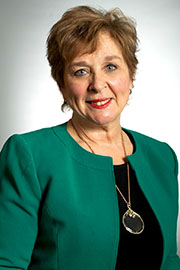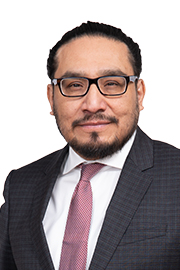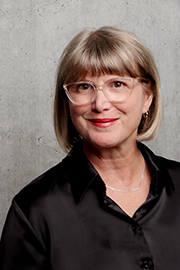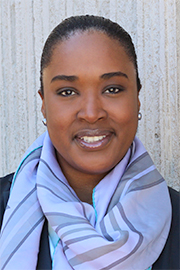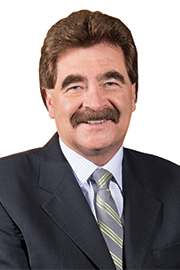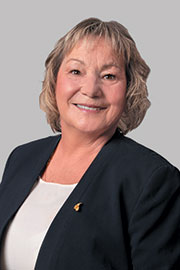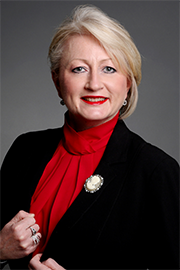- Mar/18/24 1:40:00 p.m.
I’m delighted to rise in the House today to talk about our government’s plan and our continued work to improve primary care for all Ontarians.
This motion really highlights the differences between our government and the opposition. For one thing, the opposition is very late to the issue; they’re really coming in after the fact with this motion. Our government has already held consultations, spoken with primary care providers across the province, created a specific task force with the OMA focused on reducing the administrative burden, announced a plan, and taken many steps to address this specific issue. We’ve also implemented many other programs to address the broader challenges and improve primary care in Ontario.
While the Liberals and NDP, through this motion, are focused on hiring more administrative staff, our government is focused on improving patient care, hiring more doctors, nurse practitioners, nurses, and all the allied health professionals. We are already taking action, listening to our health care partners and making historic investments in primary care and reducing red tape, including red tape in doctors’ offices.
Under the leadership of Premier Ford and Minister Jones, our government has been making record investments in health care.
Our system was neglected under 15 years of Liberal government, and our government knows that the status quo is not working.
Let’s look at what the state of Ontario’s health care system was after 15 years of failed Liberal government. For over a decade, the NDP propped up the Liberals as they cut medical residency positions, cut the number of physicians practising in family health teams, and created the longest health care wait times in Ontario’s history.
When they were in office, the NDP cut medical school enrolment by 10%, thinking that we had too many doctors. The impact of that decision—just using U of T medical school as an example—was a staggering drop in the number of doctors being trained. Just in one class at U of T medical school, they went down from 252 doctors being trained to 177. That’s a lot of doctors we do not have in Ontario today, due to bad decisions by the opposition.
And the Liberals, frankly, were just as bad, as the former Liberal Premier, in 2015, eliminated 50 medical residency spots, resulting in over 500 less doctors practising in Ontario today—100 less doctors by 2016, 250 less doctors by 2019, and a staggering 550 less doctors now practising in 2024 in Ontario, as a result of decisions made by the former Liberal government.
Do we wish they hadn’t made those decisions? Yes, we do. We really wish we had those doctors today because that would go a long way to meeting Ontario’s needs. But we can’t change the past. We can just make good decisions going forward. And that’s what this government is doing.
Let’s just contrast what the NDP, when they were in power, or the Liberals, when they were in power—sometimes supported by the NDP—did with what this government is doing. The Ford government is:
—reversing failed Liberal and NDP policies and growing our health care workforce, adding 12,500 new doctors across the province since 2018—12,500, that’s a lot;
—launching the largest medical school expansion since we were last in government, building a new medical school in Brampton and in Scarborough, and adding 260 more undergraduate and 449 residency spots at all of Ontario’s medical schools; and
—making a record investment recently, in February, of $110 million to create 78 new and expanded primary care teams, adding over 400 new primary care providers to help close the gap and connect some 328,000 Ontarians to primary care.
This, together with expanding all those medical school spots, will result in 98% of Ontarians having access to a primary care provider. But we’re not stopping there.
As a result of the failed Liberal and NDP policies, too many Ontarians were having to wait too long for appointments or surgery, having to travel too far to access care, or spending too much time navigating the health care system.
One year ago, our government introduced Your Health, a comprehensive plan to make bold and innovative, creative changes to strengthen all aspects of our health care system, making it easier and more convenient for Ontarians to connect to care closer to home. We’re already starting to see the results.
Ontario has the shortest surgical wait times in all of Canada.
Almost 18,000 people have received their cataract surgery at community surgical centres just between April and December of last year, 2023. That’s 18,000 people who can get back to work, can read to their grandchildren, can go about their daily lives, who otherwise would be on a wait-list.
The pandemic backlog for cervical cancer screening was eliminated by last August.
We’re continuing to make progress in improving mental health care, opening eight new youth wellness hubs over the past year, with 22 hubs launched since 2020, that are connecting more than 43,000 youth and families to mental health services, primary care and more.
We’re getting shovels in the ground for over 50 hospital developments that will add over 3,000 new hospital beds to the 3,500 beds that we have built since 2020—building more beds in just four years than the Liberals did in 14.
While the NDP sat idly by as the Liberals fired 1,600 nurses, this government has added more than 80,000 nurses in Ontario since 2018. In fact, 2023 was another record year for nurses, with more than 17,000 nurses registering to work in Ontario and another 30,000 nursing students studying at Ontario’s colleges and universities.
We’ve also added over 12,500 new doctors since 2018, and we are listening to our front-line doctors—our family doctors—about the challenges that they are facing. That’s why we’re working very closely with the Ontario Medical Association to eliminate duplicate and outdated forms so that doctors can focus more time on their patients and less time on needless paperwork. In fact, my colleague and parliamentary assistant to the Minister of Health MPP Gallagher Murphy and I already toured the province—I think that was almost a year ago now—meeting with primary care providers across the province to hear from them about the administrative burden that they are dealing with and to discuss proposed solutions.
But we’ve done even more. We’ve allowed pharmacists to treat and prescribe medications for 19 common medical ailments, and this program has been an enormous success. Last year, pharmacists completed over 800,000 assessments at over 4,500 pharmacies across all of Ontario. That initiative alone has resulted in hundreds of thousands of fewer visits to doctors’ offices, which also relieves pressures on family doctors and our entire health care system.
We currently lead the country with 90% of people connected to a regular primary care provider, and we have added hundreds of medical residency positions specifically for family doctors across the province.
But while we’re pleased with the progress, we know that there’s a lot more work to do to close the gap for people in Ontario not connected to primary care.
Just last month, we made a historic announcement. Minister Jones was joined by Dr. Jane Philpott, the Ontario College of Family Physicians, the Ontario Medical Association, the Ontario Hospital Association, the Registered Nurses’ Association of Ontario, and the Alliance for Healthier Communities—all of them came together for this historic announcement of $110 million connecting more than 300,000 people to primary care teams, the very kind of teams that the member for Nickel Belt said are the best kind of primary care. That’s the kind of teams we announced, adding over 400 new primary care providers—by the way, the job postings for those are up—as part of our 78 new and expanded interprofessional primary care teams. These teams consist of family doctors, nurse practitioners, registered and practical nurses and more—dietitians, social workers; whatever is useful for that community, they will have in their allied interprofessional primary care team, and they’ll be able to get better service that way. And that’s what I was talking about—about focusing on delivering more patient care by hiring more care providers, and less on the other stuff. These teams, as I said, have all of this stuff in them.
In Peterborough, which was one of the places I visited for consultations with primary care doctors, they got new funding, and it will allow the newly established Peterborough Community Health Centre to connect more than 11,000 people to primary care.
This announcement also included the innovative proposal in Kingston, the Periwinkle proposal, where an investment of $4 million will help up to 10,000 people connect to team-based primary care.
And I had the great pleasure of joining my colleague the member from Brantford–Brant to announce the government’s investment of over $3.8 million to connect approximately 14,000 patients in Brantford, Brant, Six Nations and surrounding communities to a primary health care provider.
Almost daily, our government has been announcing investments in communities across the province to connect more people to primary care:
—in Lanark–Frontenac–Kingston, more than 13,000 people will be connected to primary care;
—an additional 4,000 in Bruce–Grey–Owen Sound;
—6,600 residents in Leeds-Grenville; and
—many more people in Thunder Bay and Essex and across the province; I’ve got a whole list of them here, which we could go through one by one. Let’s see—
Interjection.
- Hear!
- Rabble!
- Mar/18/24 1:50:00 p.m.
Let’s do it? Okay. How about Couchiching, which is getting an estimated 10,000 patients attached? And there’s Wellfort Community Health Services in Brampton, Bramalea and Malton, which is attaching 7,200 patients.
So we’re really not going to stop, as a government, until everyone who wants to have a primary care provider can connect to one. That’s why we put out this great announcement recently.
And I trust that everyone in this Legislature will support our upcoming budget to ensure that this important work of attaching more Ontarians to more patient care, more interprofessional primary care teams can continue.
Together with these historic investments to expand medical school spots and breaking down barriers so highly skilled, internationally trained doctors can practise finally in Ontario, we will connect up to 98% of Ontarians to primary care.
This is a great system. I think that the international doctors and getting them qualified to practise is such an important initiative. We’ve been talking about it for 30 years, but it doesn’t get done. But this government is getting it done, removing those barriers and making sure that internationally trained doctors can also practise here in a timely way.
While the NDP and Liberals continue to be opposed to innovation and fight us at every turn, our government is working hand in hand with our health care partners to take bold action to provide more people with the right care in the right place in every corner of the province.
I would like to read a few quotes about our primary care expansion. This one is from Dr. Jane Philpott, former Liberal health minister, dean of Queen’s health sciences. She said, “This funding announcement”—this was in February—“is great news for the people of Ontario. We know that provinces built with strong systems of primary care will offer people the best health outcomes, at the most affordable public cost, providing care that is both equitable and accessible. Today’s news moves us one big step closer to the dream of ensuring that every person in Ontario will have a primary care home.” That’s a great quote from Dr. Philpott.
Another quote, from Dr. Andrew Park, president of the Ontario Medical Association: “Family doctors are the foundation of our health care system. Every Ontarian, no matter where they live, should have access to a doctor and a well-coordinated health care team supporting them when and where they need it. This is an important step towards that goal.”
Kimberly Moran, the Ontario Medical Association CEO, said, “The OMA has been advocating for increased investments in teams to improve access to care and ensure doctors and health professions are able to do what they do best, care for patients. There are benefits to team-based care for both patients and providers so our goal is to get every Ontarian access. This announcement to triple the original funding plan is a significant move in the right direction.”
And how about Dr. Doris Grinspun? She said, “The expansion of primary care, and—in particular the enhanced utilization of NP expertise alongside RN prescribing—will unlock timely, safe and quality care for Ontarians. Better care and health outcomes also lead to lower system costs—a win for Ontarians as patients and as taxpayers. We are pleased that the government is demonstrating commitment to publicly funded, team-based primary care, which will begin transforming the health system for all and especially for marginalized and vulnerable populations.” Thank you, Dr. Grinspun, for that.
Here’s a quote from Anthony Dale, president and CEO of the Ontario Hospital Association: “The Ontario Hospital Association thanks the government of Ontario for making new investments in primary health care teams, which will improve access to high-quality primary care and address some of the capacity pressures on hospitals by keeping more Ontarians well and less likely to require hospitalization.”
Another quote I can offer is from the Ontario College of Family Physicians. I think my friends mentioned the Ontario College of Family Physicians—the president, Dr. Mekalai Kumanan. The quote is: “Today’s announcement to expand and grow access to teams of health care providers will ensure that more Ontarians can get the right care, from the right provider, while adding needed support for family doctors. The Ontario College of Family Physicians has been advocating for expanded team-based care in this province, and today’s announcement is a positive step forward. We look forward to continuing to work with the Ontario government to ensure that every Ontarian has access to a family physician.”
Dr. Matt Anderson, president and CEO of Ontario Health, said, “Increasing and expanding interprofessional primary care teams will provide more people access to primary care, which is critical for a stable and high-functioning health system. This expansion is an important step in advancing our goal of a more connected and coordinated” health care system.
Sarah Hobbs, the CEO of Alliance for Healthier Communities, said, “The announcement made today by the government of Ontario is historic. The expansion of interprofessional team-based care is a critical step to addressing access to primary health care and realizing the government’s vision of connected and convenient care. This is an important step towards positioning primary health care as the foundation of the health system. We are thrilled with the investment in a new community health centre in Peterborough and the new Periwinkle-Union Street team, as we know these primary health care models will provide much needed care to people who face the most barriers to access. We want to thank the government for the increased operational support for existing teams. This helps our members keep the doors open for their communities, by ensuring they can pay the rent, and keep the lights on.”
Here’s a quote from Dr. Michelle Acorn and Barbara Bailey, CEO and president of the Nurse Practitioners’ Association of Ontario: “The Nurse Practitioners’ Association of Ontario (NPAO) is thrilled by the recent announcement from the Ontario Ministry of Health regarding the allocation of additional funding towards expanding interprofessional primary care and existing programs. This is a significant investment that will support nurse practitioners, as integral health care team members, in ensuring Ontarians receive the high-quality, timely care they deserve. NPAO looks forward to continuing to work with the Ministry of Health to advance our shared goals of comprehensive and accessible health care delivery.”
It just goes on. Let me do a couple of more, and then we’ll stop.
The CEO of the Association of Family Health Teams of Ontario, Leslie Sorensen, said, “We commend the government of Ontario for further investing in interprofessional team-based primary care across Ontario. These projects are going to be critical to ensure more Ontarians have access to primary care teams that can provide the wraparound services we know result in better outcomes and faster access to care. This is an important step in building upon the comprehensive programs offered through team-based primary care and expanding these teams as the foundation of Ontario’s health care system.”
Caroline Lidstone-Jones, CEO of Indigenous Primary Health Care Council, said, “This is a great step in the right direction, and we are thankful for the investment into the integrated primary health care sector. By targeting underserved groups and areas, this historic investment will help tackle issues around access to interprofessional primary care and the IPHCC looks forward to partnering with new and existing agencies. We are also thrilled that this investment includes supports for operational facilities and supplies, and most importantly includes provisions for culturally appropriate care provided by Indigenous traditional practitioners.”
Let me do one more quote. The chair of the Nurse Practitioner-Led Clinic Association, Teresa Wetselaar, said, “On behalf of the Nurse Practitioner-Led Clinic Association, I extend heartfelt gratitude to the provincial government for their visionary commitment to primary care. The allocation of $90 million towards the expansion of interprofessional care teams is a testament of their dedication to fostering comprehensive, patient-centred care. This commitment will reduce barriers for underserved communities and improve access for unattached patients, particularly those in marginalized or vulnerable populations. Additionally, the wise decision to invest an additional $20 million in supporting the operational pressures faced by existing primary care teams exemplifies a deep understanding of the challenges our primary health care teams navigate daily. This significant financial support not only empowers us to broaden the reach of collaborative care but also fortifies the foundations of our existing teams. I commend the provincial government for prioritizing the well-being of our communities. Together, we are charting a course towards a more resilient, inclusive, and connected health care system.”
Thank you for indulging me to go through some of those great quotes from some of our health care partners about our interprofessional primary care team announcement, which we know is a historic announcement that is going to change the face of health care in Ontario and make sure that more people have access to primary care. It’s the largest expansion of interprofessional primary care teams since they were created, and it’s a huge boost for the Ontario primary care system.
After years of neglect, as I said at the beginning of my speech, by the Liberals and the NDP supporting each other, I know that every member of this Legislature wants to see investment in the health care system which builds a more connected and convenient system.
But if the members of the New Democratic Party across the way, the opposition, really want to show support for primary care, there really is a great opportunity to do that: by voting for our government’s historic expansion of primary care that we announced earlier this year. I certainly hope that they will show their support by voting for this continued expansion in the upcoming budget, because for primary care—for health care, really, across Ontario—it’s under the government of Premier Ford that we’re getting it done.
- Hear!
- Rabble!
- Mar/18/24 1:50:00 p.m.
How about Essex county?
Mrs. Robin Martin: Essex county. I just said Essex, didn’t I?
Interjection.
- Hear!
- Rabble!
- Mar/18/24 2:00:00 p.m.
It’s an honour to be able to speak on this opposition motion on primary care.
Last month, I was at the NAN—Nishnawbe Aski Nation—chiefs’ assembly meeting. One of the things that they talked about was that the First Nations in NAN territory in northern Ontario—49 First Nations—continue to experience an ongoing and worsening state of access to quality health care, including emergency health services. There’s limited accountability within the health care system. First Nations are in a state of perpetual crisis, which is demonstrated by sudden deaths of children. We have child suicide pacts and other preventable deaths that are happening.
I know that primary care, in general, and family medicine, in particular, are definitely in crisis. It is on the lips of family doctors, and they desperately need high-level leadership and policy focus to prevent things from collapsing.
One of the physicians I spoke to earlier said that many of his contemporaries who have started family practices or have taken them over—either they have already gotten out in favour of other things or are desperately trying to get out. One of the things that he said about this motion is that providing more administrative support is definitely part of the solution and would definitely make it more appealing to go into family medicine, and he said that this motion is great in that regard.
Listening to the member across the way—thank you for those comments. Thank you for not even mentioning Kiiwetinoong. Thank you for letting us know that oppression still continues in Ontario.
Thank you to this government for letting me know, letting First Nations people know, that colonialism by way of health care still exists.
In the north, we have to change a sickness system into a primary care system—because currently, it is sickness care, because the only time the system responds is when our people are dying and when our people are sick. Meegwetch.
- Hear!
- Rabble!
- Mar/18/24 2:00:00 p.m.
Further debate?
- Hear!
- Rabble!
- Mar/18/24 2:10:00 p.m.
Further debate?
- Hear!
- Rabble!

- Mar/18/24 2:10:00 p.m.
Ça me fait plaisir de parler sur la motion qui a été faite par notre chef. Mais je veux remercier aussi mon collègue parce qu’il a parlé beaucoup de quoi mon comté—vous savez, dans mon comté aussi, il y a beaucoup de Premières Nations dans la baie James qui vivent les mêmes situations. Fait que, je veux le remercier pour amener sa perspective, qui nous donne une chance de parler d’autres perspectives qui se passent dans le nord de l’Ontario.
Je veux vous parler de la communauté de Hearst. Ils viennent d’apprendre qu’ils viennent de perdre leur troisième médecin. Les médecins, ils prennent leur retraite pourquoi? Justement, pour la paperasse qu’ils sont obligés de remplir. Ils n’en sont plus capables. Ils sont après de faire des « burnouts ». Ils sont sur le bord du « burnout », et on a un gouvernement qui est tellement déconnecté, qui dit que ça va tellement bien dans la province. Je m’excuse—qu’ils partent de leur tour d’ivoire et qu’ils viennent faire un tour chez nous, qu’ils viennent faire un tour à Sudbury. On l’entend partout, de toutes les régions, comme c’est là. On parle de toutes les régions en Ontario. Ce n’est que sur le bord du gouvernement que ça va bien. Il y a quelqu’un qui est déconnecté ici, puis pas à peu près.
J’ai près de 70 % de la communauté de 5 000 personnes à Hearst qui n’ont pas de médecin de famille. Ils sont obligés de voyager juste pour aller voir un docteur pour les yeux, un oculiste—trois heures pour aller voir un oculiste parce qu’il n’y en a pas dans la région. Il y en a, mais ils sont débordés. On n’a pas de médecins. Ils sont obligés d’aller dans les urgences. Quand ils ne sont pas capables, ils sont obligés de se déplacer. Où est-ce que ça fait du sens, ça?
On est dans la même province que vous autres. On mérite les mêmes services que vous autres. Vous êtes tellement déconnectés que vous n’êtes même pas capables de voir ça. Et on a des communautés comme Hearst qui souffrent parce qu’il y a du monde qui a besoin de médecins de famille.
Pourquoi est-ce qu’ils disent qu’ils prennent leur retraite? Ils sont sur le bord de tomber et il n’y a pas personne, puis encore bien plus quand on est francophone; on a encore moins de médecins.
On est doublement touché avec ça, madame la Présidente, et on a un gouvernement qui se pète les bretelles, comme on vient d’entendre. Ça n’a aucun sens. On a du monde qui a besoin des médecins de famille. On a une motion qu’on propose qui fait du sens. Supportez-la parce qu’il y a du monde dans le nord de l’Ontario qui a besoin de médecins. Vous êtes capables de faire des bonnes choses : supportez notre motion.
- Hear!
- Rabble!
- Mar/18/24 2:10:00 p.m.
Speaker, 2.3 million people in Ontario do not have a family doctor. That’s 2.3 million Ontarians who cannot access the basic humane right of seeing someone whose expertise is in taking care of sick people. Many of those 2.3 million people have ended up on the doorsteps of our already understaffed, underfunded and overburdened emergency rooms—some of which have experienced shutdowns under this Conservative government due to its ongoing health care privatization scheme.
The goal should be to keep people out of ERs as much as possible, for as long as possible, but to do that, people need access to family doctors, so they can manage their physical and mental health needs. Statistics show that those without access to primary care are more likely to receive late diagnoses, which directly impacts both short- and long-term health outcomes. Without family doctors, if you need a specialist appointment, good luck on that journey, because you’re out of luck.
Every Ontarian deserves access to care. I say this as an MPP representing my community of St. Paul’s, I say this as a family member of folks in my own family who don’t have family doctors, and for many in this community—and many are racialized, let me tell you that. Many are in communities that are already underserved; many are rural; many are northern.
Today, we, the Ontario NDP official opposition, are giving this government yet another opportunity to help patients, to put them first. We are giving this Conservative government a solution to help our doctors get back to what they do best, that is, seeing patients, not having to fill out 19 hours a week of necessary, critical administrative work and paperwork. Help patients access more doctors by reducing the amount of time doctors spend on administrative work. That’s what we’re asking, Speaker. Help patients access more doctors by reducing the amount of time doctors spend on administrative work.
We are calling on this government to invest in administrative support staff and integrated health teams. By doing so today, we can add the equivalent of 2,000 more family doctors here in Ontario and help up to two million additional Ontarians get the help they need.
This should not be a partisan issue, Speaker. Saving lives should be about humanity. The NDP has put forth a solution. The government has the opportunity today to save people’s lives. Will the government accept our proposal today? Yes or no?
- Hear!
- Rabble!
- Mar/18/24 2:10:00 p.m.
High-quality primary care is the foundation of a health care system. Primary care through family doctors is the first point of access and interaction with our health care system for the majority of people. Having access to primary care through a family doctor consistently leads to improved health outcomes. It prevents minor ailments from turning serious. It can prevent and manage chronic problems, as one of the main functions of primary care is disease prevention and health promotion. Through that it reduces the burden on hospitals, as it results in fewer emergency department visits and hospitalizations.
Having a family doctor also allows for follow-up care once a patient has been discharged from a hospital. Primary care is the first line of defence and we cannot underestimate how essential primary care is to ensuring that the rest of the health care system works.
Investing in primary care provides substantial savings to the province’s finances. Some 2.2 million Ontarians do not have a family doctor right now and according to the Ontario Medical Association, that is going to increase to 4.4 million people in just two years, of course unless significant action is taken.
What action can be taken? It’s not that hard to figure out. Family doctors will tell you exactly what needs to be done. Listen to the practitioners. There are several changes that need to be made. The NDP motion today is one step and it’s an important one, because it is a solution that results in help quickly while we also work on longer-term solutions.
The Ontario College of Family Physicians estimates almost half of a family doctor’s work week is taken up by paperwork. By providing the appropriate administrative supports, we can increase a doctor’s capacity for patient care. This is a simple solution. It frees up time for current doctors to take on more people as their patients, simply by hiring staff to take on the administrative portion of the doctor’s work.
We’re calling on the Conservatives to support this proposal that can and will make a difference in the lives of millions of Ontarians without a family doctor.
- Hear!
- Rabble!
- Mar/18/24 2:20:00 p.m.
I’m going to start, actually, by addressing what MPP Martin had said, because she attacked the NDP and their record going back over 30 years ago. What she failed to mention is that under the Harris government they laid off 6,000 nurses and closed 26 hospitals. That’s exactly what happened. Then, following that, they ended up coming from that side of the House to this side of the House as the official opposition. You know what? For 15 years, their entire accomplishments could be put on the back of a postage stamp. That’s the reality of that.
I want to talk real quickly, because I don’t get a lot of time here, about Fort Erie and the fact that I held a town hall meeting in Fort Erie where we had 400 residents. You know what they were arguing about? They were arguing about keeping the urgent care centre open 24/7, like they should be when you’ve got 40,000 residents. A lot of them are seniors, a lot of them don’t have public transit, and do you know what they need? They need a doctor. Think about this.
What I did: I went to the Premier and I said, “We need to keep our urgent care centre open in Fort Erie.” You know what he said to me? “You know what we need”—I forget what he called me. He might have called me Gatesy. I’m not sure what he called—he might have called me other names. At the end of the day, you know what he said? “We need doctors.”
Well, here we have today a motion that’s going to get you close to 2,000 doctors. Why don’t you listen to the motion, support the motion, and then I can get my urgent care centre open 24/7, like it should always be open, to save lives?
That’s what this is about. It’s about getting a doctor, but it’s about saving lives. What’s one person’s life worth in the province of Ontario?
- Hear!
- Rabble!
- Mar/18/24 2:20:00 p.m.
There are 165,000 people in Ottawa, Speaker, who do not have a family doctor or a primary health care provider, and I hear on a weekly basis from these patients who are desperate, who are frustrated and, in some cases, scared. These are people who have nowhere to go for basic, routine health care, who have no one to ask the question to when they find a lump or something disturbing, who have nowhere to go just to get a prescription renewed.
Our emergency rooms in Ottawa are packed, and yet this government is cutting funding to the Queensway Carleton Hospital for emergency care so that, come April, there will be 10 fewer physician hours in the ER every single day. People do not want to go to the Queensway Carleton for basic health care, but they are desperate. So desperate that when the South Keys Health Center opened up and told people they could have health care for $400 a day, plus $75 for each visit, there were 2,000 people on the wait-list for this care. Appletree is able to charge $110 for a pap test and then another $110 to get the results of that pap test. ReVive health care in Kanata is charging $600 for primary health care, and there are people in Ottawa who are so desperate for care that they are willing to pay these prices.
This is the government that said nobody would have to pay with their credit card, and yet here are people in Ottawa having to pay with their credit card for the most basic of health care.
Then, last week, we learned that there are some incredibly unsavory operators operating in this field, where there is no health regulation and people have no idea who is providing this care that they are paying for.
The government could address this crisis today, stop the exploitation, stop putting people at risk, if they adopted the NDP motion, which would provide an additional 19 hours a week of administrative support for doctors and provide primary care for two million people, which would include the 165,000 people in Ottawa.
I urge the members on the government side to vote today to put a stop to this exploitation and provide people with the primary care that they deserve.
- Hear!
- Rabble!
- Mar/18/24 2:20:00 p.m.
Further debate?
- Hear!
- Rabble!
- Mar/18/24 2:20:00 p.m.
I stand to debate this motion with the knowledge that in Niagara alone 73,000 residents—seniors, young families, everyone—are in search of a family doctor, an increase of 20,000 in just nine months. How can we, as stewards of this province, say we are addressing the emergency room crisis or even claim to mend the gaping wound of primary care scarcity when our primary care providers like Niagara’s family health teams have not seen a base funding increase in over a decade? That means when the government invariably kicks up dirt, points their fingers and says that the problem is out of their control or is inherited. Refusing to increase base funding for the very primary care providers that are in crisis is not about making different choices about Ontario’s health care. It is about choosing to recklessly and dangerously ignore Ontario’s health care.
Our primary care providers are the unsung heroes. When I sat down with our family health teams in Niagara, I saw a committed staff calling out for a supportive primary care system. The message was very crystal clear. They need, we need an urgent strategy to bolster our workforce, allowing these dedicated professionals to focus on treating patients, not paperwork. This is not just about numbers; it’s about people—people suffering because our system fails to prioritize their most basic health needs.
We must act, not tomorrow, not next year, but now. To invest in primary care is to invest in the heart of our communities. Let’s give our family health teams the support they deserve. Let’s build a better and healthier Ontario for all residents.
- Hear!
- Rabble!
- Mar/18/24 2:20:00 p.m.
I am happy to rise today in the House to build on the remarks from my colleague the MPP for Eglinton–Lawrence, to share with this House how our government is leading the way to strengthen primary care in every corner of our province for years to come.
We greatly appreciate the leadership and dedication of Ontario’s primary care providers to improving the quality of life, health and well-being of Ontario families. The work of the primary care sector does not go unnoticed. Primary care is an integral part of our health care system, meeting the different needs of our diverse communities and populations, including in many northern and rural communities, and providing care to some of our most vulnerable residents. It helps to preserve the capacity of our emergency departments and hospitals, while also building important connections with other key services that Ontarians rely on, such as home and community care or mental health and addictions supports.
Now, unlike the NDP and the Liberals, our government, under the leadership of Premier Ford and Minister Jones, is working hard to support primary care across this great province of ours. And while progress has been made, we know there’s more to be done. That’s why, just last month, Minister Jones announced a record investment of $110 million to expand access to primary care in every corner of the province.
I would like to highlight that, of that $110 million, $20 million of that is for an increase to our existing primary care providers. I do know that the member from St. Catharines just made note in her speech that they have not received an increase. Speaker, I reiterate: $20 million of that $110 million is an increase for the existing primary care.
Now, this funding will connect up to 328,000 Ontarians to the care that they need closer to home. I was delighted to participate in the announcement in York–Simcoe that our government’s $1.4 million will support an additional 2,700 patients.
Speaker, I’d like to speak about that announcement that I had attended, because it was interesting, as my colleague the other parliamentary assistant to the Minister of Health noted. We were attending various round tables with primary care providers, starting back last May. My first round table was in my own community of Newmarket–Aurora—in fact, with the Aurora Newmarket Family Health Team. It was wonderful, sitting down and chatting with them about what they felt our government could perhaps help with so that they can spend more time with their patients. One of the things I heard was, obviously, the burden of paperwork. The other thing was about multidisciplinary teams: how well they work together by having the primary care provider, a nurse practitioner, nurses, social work, dietitians, physiotherapy. It was truly the multidisciplinary team that came together, that provided that great service to their patients.
I bring this up because when I attended the announcement for York–Simcoe, after the announcement, one of the members of the Aurora Newmarket Family Health Team came up to me and she thanked me. She said, “Thank you, Dawn. Your government is listening, and we appreciate this announcement. I said, “I am so happy that we are able to spend that time with our primary care providers, listening to them, because they are the ones who are providing that great care for the patients,” and that’s what we are doing, and that’s what this announcement was all about. I thank her for coming up to me after that announcement.
Now, as well, Speaker, we witnessed—I witnessed, and some of my colleagues witnessed—a great excitement in Brampton just this past Friday, when we announced their community expansion. WellFort CHS is receiving over $2.7 million, and they will be able to connect over 7,000 patients. As well—and I’m happy to say about this one; I was very excited—Homeless Health Peel is receiving over $1.6 million to connect more than 1,600.
Why I’d like to talk about Homeless Health Peel is because I met with the director, who’s a nurse practitioner, and he led this group that came out of COVID-19. I’m very excited about this program, because I remember approximately maybe a year ago—just under a year ago—I met with him a couple of times. Clinton is his name, and he does such great work. They are mobile. They are going into homes, dealing with our most vulnerable population, our homeless population, ensuring that they are cared for, and they started this journey in COVID-19.
Well, Speaker, I am proud of our government, because now, with that funding, they are going to be able to help connect more than 1,600 people. I’m proud of our government for doing that, and thank you, Clinton and your entire team, for what you’re doing for the great people of Peel region.
In Simcoe North, 20,000 people will be connected to primary care, over 8,700 in the Waterloo region and 5,000 in Parry Sound–Muskoka. Following our government’s announcement of an almost $6-million investment in northeastern Ontario communities like Timmins, Porcupine and James Bay, Katherine Harvey, the interim executive director and a registered nurse from the East End Family Health Team in Timmins, had this to say: “It gives us hope for a bright future for health care in Ontario. I actually could cry.”
And this good news is continuing in Niagara, Elgin county, Listowel-Wingham, Northumberland county and so many more communities.
In Ontario and around the world, health care systems are continuing to face challenges and our government continues to actively engage with our health care partners to identify solutions to respond to these challenges. Through our Your Health plan introduced last year, we are taking bold action and making health care more connected and convenient. This is to improve the health care experience for all Ontarians at every stage of life.
Speaker, I would like to highlight some of the funding and the number of patients that will be connected through this primary care funding that we announced in February. The member from the opposition spoke about First Nations. I’d like to highlight a few of the fundings for our First Nations:
—Weeneebayko Area Health Authority in Moosonee and James Bay coast: Over $900,000, and it will connect 2,275 patients;
—I’d also like to mention right here in Toronto, Anishnawbe Health Toronto: A mobile unit expansion; they will be connecting 570 patients;
—I’d also like to speak to the Wasauksing First Nation in Parry Sound: with their expansion, 400 more patients;
—I mentioned Weeneebayko Area Health Authority already, but it’s actually double the funding, so it’s actually well over a million dollars and 4,450 patients for care.
Speaker, I could go on:
—Six Nations of the Grand River Family Health Team, and that’s at Six Nations of the Grand River: more than $1,250,000; that will connect 2,275 patients;
—SOAHAC Newbury in the Newbury area: 800 patients;
—SOAHAC Chippewa in Muncey: 570 patients will be connected;
—Six Nations of the Grand River family health, with over $600,000 and 1,140 patients.
This is great to see these numbers.
Speaker, to improve the health care experience for all Ontarians at every stage of life, our government recognizes the need for an integrated approach—one that uses the knowledge, skill and expertise of many dedicated health care professionals. We are continuing to collaborate with partners to connect communities to the services they need close to home, no matter where they live.
Ensuring continued engagement with the primary care sector remains critically important to us to inform broader health system priorities from a primary care clinician’s perspective.
Our government is working with our health care partners to tackle the administrative burden on physicians through the bilateral Burnout Task Force, by improving the OMA-endorsed priority government forms. Our work has significantly accelerated work to simplify forms, and we look forward to sharing the improvements that have been made in the near future.
Our government has also launched an initiative called Patients Before Paperwork. This is to further tackle the administrative burden on physicians while reducing the risk of delays in diagnosis and treatment.
In our Your Health plan, we outlined our plan to axe the fax, replacing outdated fax machines with digital alternatives. Yes, it’s hard to believe that fax machines are still used, but they are. To give some perspective, a 2022 provincial survey of health care providers found that there are an estimated 152 million faxes across Ontario’s health care settings in a single year, including 71 million paper-based faxes and around 81 million e-faxes being sent between health care providers.
Other initiatives we have launched through Patients Before Paperwork include an e-referral service to allow the electronic referral of patients from primary care to specialty care.
Speaker, these are the things we heard about when we attended these primary care round tables. They talked about the need to ensure that they can reach out and get that referral for their patient. I heard it consistently through each of the round tables. One of the biggest stresses for a primary care provider is that they want to refer their patient to that specialty care sooner than later, because they know the faster the diagnosis, the better the outcome. These are the things that we’re working on to ensure that we answer the need of our primary care providers so that we can connect them to the right referral at the right time, so that patients can get that diagnosis sooner, because we know they will have better outcomes.
We’re also working on an e-referral service to allow primary care providers to send lab requisitions electronically, covering all labs in the province, compared to the current system in place, with a minority of labs connected.
The provincial health services directory is the development of a single-source directory for health care services in Ontario, so that health care providers and patients can have access to up-to-date, reliable and accurate information about the services provided by individual health care providers across the province. Our forms initiative further enhances provider access to administrative forms. They are standardized and available from point-of-care systems. Digitalization and standardization of forms streamlines form management and delivery while making the practice less burdensome for providers, while improving data quality and information-sharing. I think this point right there is extremely important because, again, this is something I heard throughout the round tables with our primary care providers. They really spoke about how we need to use advanced tools, that we are in the 21st century. Why are we using these faxes? How can we become more digitally inclined? Some are doing more than others, but we need consistency.
I want to reiterate this point: Digitalization and standardization of forms streamlines form management and delivery—that’s not so much with support staff; that’s using tools that people can use in this modern-age world while making the practice less burdensome for providers, while improving data quality. That is a critical component as well—the quality of that data that is being used and the information for sharing purposes. And why? For the benefit of that patient.
A number of eForm approaches exist, including provincial administrative forms being integrated into EMRs, locally hosted forms in EMRs, and the SADIE portal that is used by providers to submit electronic forms to the Ministry of Health.
Patients Before Paperwork would develop an eForms governance model and form integration standards, identify a technical delivery platform that can be broadly leveraged across HSP point-of-care systems for consumption of eForms, and roll out eForms on the common platform so various point-of-care systems can consume, exchange and disseminate form content with intended partners, replacing the ad hoc paper forms. This is going to be amazing, and we know it’s going to solve a lot of the challenges with our primary care providers. This work will be aligned with the Ministry of Health and the OMA forms committee work to streamline and rationalize existing, high-volume, high-burden forms. Early priorities for form integration with EMRs and other front-line provider solutions will be directly informed by this work.
We look forward to continuing to connect with and engage our primary care partners as progress is made toward delivering more integrated and sustainable primary care services to all Ontarians.
Speaker, before I continue, I thought this would be a good point to talk a bit more about the announcement I attended in Brampton this past Friday. Listening to the words of the executive director as she informed me about some of the work that they are doing with their primary care, how they’re working, thinking outside of the box, and how they’re supporting their community members—not just there at the CHS, but going out into the community. I think this is where the Homeless Health Peel also came in—because they are right there, out at different shelters, going in there to provide the primary care.
I also think back to the announcement I attended in Georgina for that care expansion. It was so exciting to see all the people who participated. You had the paramedics. There was the region. You had the primary care providers. You had Southlake health attending. You had CMHA participating, from the mental health and addictions perspective. You had the nurse practitioners there as well. There are so many different parts because they knew—they said, “This is exciting. This is what we need, because we know the primary team approach is exactly what we need.” And that, as I said earlier—connecting more than 2,700 patients right there in the Keswick and Georgina area.
Speaker, back to the health report manager: This sub-work stream would introduce service improvements to the HRM, which sends reports from acute-care hospitals to community providers like primary care to inform care transitions.
A number of issues have been raised, particularly by receiving facilities—that how reports are received can be a fragmented and administratively overwhelming experience. Ontario Health has conducted a third-party assessment of HRM and has identified key areas of improvements to the HRM so that the noise in the receiving EMR can be eliminated.
Patients Before Paperwork would bring focus to these areas, including standardization of reports from sending facilities, a more stringent approach to how EMR and other point-of-care systems present reports to the clinical user, and migration of the service to the clinical data foundations platform at Ontario Health to better serve the clinical communities by enabling capability to choose what reports are relevant and to be received via publication and subscription.
I would also like to speak to—parce que je sais bien que notre collègue a mentionné les patients francophones, je voudrais bien remarquer le Centre de Santé Univi Health Centre qui est à Sudbury district, French River. Ils ont reçu plus de 617 000 $, et il y aura 2 275 patients qui vont recevoir des soins.
Aussi, encore, le Centre de santé communautaire de Kapuskasing et région—c’est le Kapuskasing Family Health Team. Il y a une nouvelle équipe maintenant là. Ils sont à Kapuskasing et ils ont reçu plus de 355 000 $ et il y aura 2 600 patients qui vont recevoir des soins aussi.
Une autre expansion, c’est, encore, le Centre de Santé Univi Health Centre, qui est à French River : plus que 300 000 $. Il y aura 2 400 patients qui vont recevoir des soins là-bas.
Aussi, à Chapleau, le Chapleau and District Family Health Team : il y a une expansion là-bas. Je suis tellement contente de vous dire, madame la Présidente, qu’ils vont recevoir 180 000 $ et il y aura 2 200 patients qui vont recevoir des soins.
Alors, je suis tellement contente qu’on a des expansions pour nos gens francophones, parce qu’on sait bien qu’on a une grande population francophone ici en Ontario. Donc, je suis tellement fière de notre gouvernement de faire ces expansions-là.
To ensure our government’s exciting work to strengthen primary care can continue, I trust all members in this House will be voting to support the upcoming budget—
- Hear!
- Rabble!
- Hear!
- Rabble!
- Mar/18/24 2:50:00 p.m.
Further debate?
- Hear!
- Rabble!
- Mar/18/24 2:50:00 p.m.
Thank you—to signal their support to this very, very important sector, if not the most important sector, our health care sector, and to all Ontarians that primary care is a top priority in the province.
All Ontarians deserve to receive health care that is responsive to their needs, regardless of where they live or who they are. And our government will continue to support better, more connected, and inclusive patient-centred care for everyone. This is why I hope that the opposition will indeed show their support for our primary care investments. I just spoke about so many from my riding, to a variety of ridings—Brampton to all over northern Ontario, other locations, even downtown Toronto, mobile expansions. This is why I hope the opposition will show their support for our primary care investments—because those who were at these announcements are expressing their appreciation for these expansions, because they know these expansions and these investments are making and will make a difference.
If the opposition members truly believe in investing in our primary care, then they should show their support by voting for the upcoming budget.
- Hear!
- Rabble!
- Mar/18/24 2:50:00 p.m.
I’m proud to stand in here in support of this very practical motion to provide additional administrative support for doctors so they can focus their time and their talent and their skills on providing patient care. We estimate an investment in administrative support could enable doctors to take on approximately two million more patients. It is a very practical solution that we are presenting today.
In my riding, we have a primary care provider and family doctor shortage.
I recently met with staff and patients from the Taddle Creek Family Health Team. They represent over 25,000 people; they have over 25,000 patients. The doctors told me that they spend easily 20 hours a week on administration, faxing forms, filling in paperwork, referring patients to multiple specialists as there is no centralized wait-list.
The Taddle Creek executive member was telling me that they have many vacant positions that they cannot fill—nurses, pharmacists, social workers. They also told me that people are leaving because they are not paid enough and they can get higher-paying jobs elsewhere. They have made a request to this government to raise wages for staff to comparable wages in the hospital sector, and it was rejected, and as a result, doctors and staff are leaving. This is the family health team that just had one doctor go to a private executive health clinic where it now costs $5,000 a year to access that medical clinic and get basic primary care. That is a shame, and that should not be happening in Ontario today.
When people are left without a family doctor, their health is at risk. Some people will get sicker. Some people will end up in the emergency room. Some people will needlessly die. I do not think this is right.
I believe this government is driving our primary health care system into the ground.
Our health care system depends on people having a primary care provider—it is the backbone—who can perform physicals, prescribe medication, do referrals and consistently manage non-urgent and preventive care.
Residents should not have to go down to the emergency room to get a prescription for antibiotics because there is nowhere else for them to go. That is happening in University–Rosedale today. It is a shame.
We are calling on this government to fix the family doctor shortage and the primary care crisis because everyone in Ontario should have access to good primary care that works for them, regardless of their age or ethnicity, or where they live, or their income.
We have presented a practical solution today to provide additional administrative support to doctors so they can expand the number of patients they can see and do the job that they do well to more people.
I am urging this government to support our motion today and fix our primary care provider shortage.
- Hear!
- Rabble!
- Mar/18/24 2:50:00 p.m.
Most people listen to their doctors. People trust their advice and do what they are told that they need to do. That said, that is not happening when it comes to this government and sound medical advice. This government hasn’t been listening to doctors, which is why we are here today debating a practical solution proposed by the Ontario NDP to help more doctors to see more patients.
The lines for walk-in clinics start well before they open and wrap around buildings. People need care, but they can’t find it. Nicole in Oshawa has a family doctor in Scarborough, but she can’t get off that roster to free up space for a local patient, because then she won’t have a doctor. Frank moved here from out of province and hops from clinic to clinic to get important prescriptions renewed. Newcomers and new neighbours try to figure out waiting rooms without English or a primary care provider. Folks need access to medical care, and they need family doctors.
The Oshawa Clinic is moving to Whitby imminently, and we don’t know what will become of their patients if they can’t travel and follow them.
Some 2.3 million Ontarians do not have a family doctor. The NDP has a solution that will get people access to the doctors we have today by freeing them up to see additional patients. Doctors are tied up with paperwork and are unable to see as many patients as they otherwise could if they had support with the workload. We have listened to our doctors, and we’re proposing that the province hire staff support to free up family doctors, and we’re proposing that the province hire staff soon. We could take an additional estimated two million more patients—the doctors can handle up to two million additional patients if we did something now. This still won’t solve all the ills of the system. We need more doctors in the system and more doctors to go into family medicine. We still need family doctors in communities where there aren’t any. But where there are doctors, we want them to be able to work to their full capacity.
Hire staff support to handle the paperwork, so doctors can handle the patient work. There is no time to waste, because as we know, an ounce of prevention is a worth a pound of cure. We want a healthier system so we can have healthier communities. We need to do something today to support the family doctors of tomorrow.
Today, we can support this motion to ensure more patients have access to the doctors we currently have. This motion is just what the doctor ordered, and I hope this government will follow good advice.
- Hear!
- Rabble!
- Mar/18/24 3:00:00 p.m.
Further debate?
- Hear!
- Rabble!

